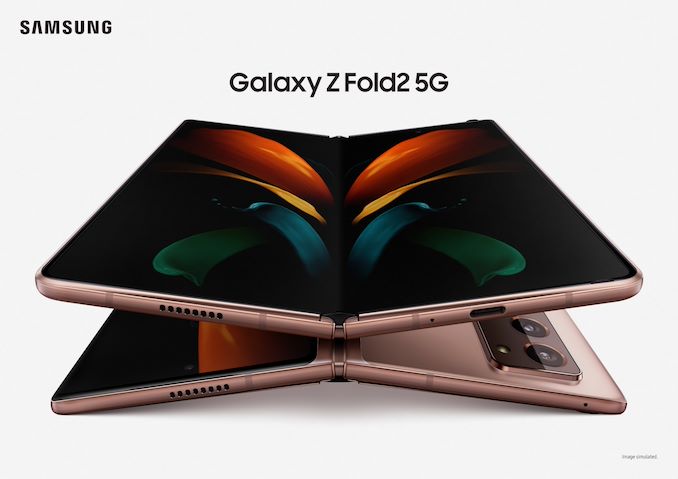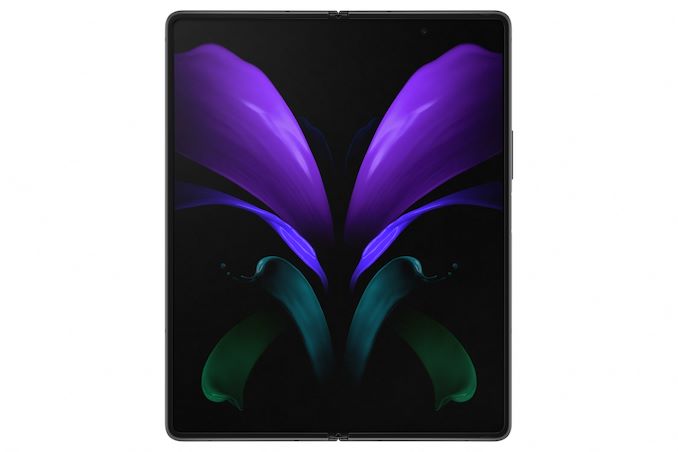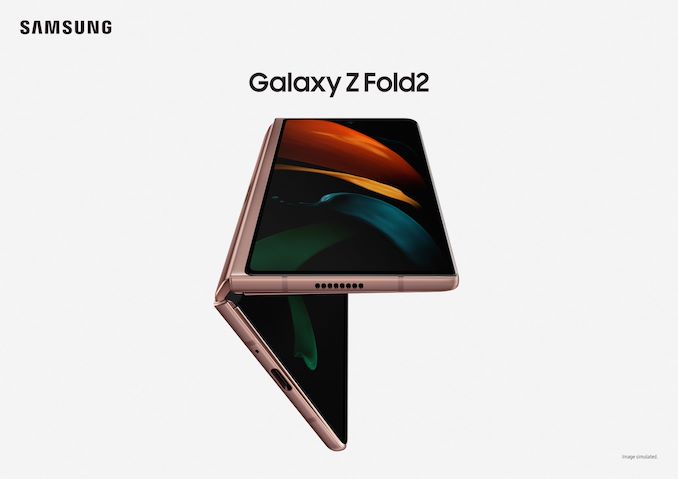Samsung Announces Galaxy Z Fold 2: Second-Generation Foldable
by Andrei Frumusanu on August 5, 2020 12:45 PM EST
Alongside the new Note20 series smartphones, Samsung is today pre-announcing the brand-new Galaxy Z Fold 2, the successor to last year’s quite controversial Galaxy Fold smartphone, a device which had been marred by manufacturing defects and delays. Today’s coverage of the Z Fold 2 isn’t an actual launch, but rather a pre-announcement ahead of the device’s proper debut in September. Today’s coverage mainly divulges the new phone’s design, with Samsung talking about how they have improved the folding mechanism of the phone and solve some of last year’s issues.
Starting off with the main characteristic of the device, the main large folding screen, Samsung has changed things up a bit to make the new Z Fold 2 appear more of a contemporary device rather than the more dated look of the original Fold. Improvements here include reduced bezels on all sides, and the removal of the very large “corner-notch” in favour of a hole-punch interior front camera, centred on the right half of the main large screen.
The only specification Samsung has released on the phone so far is the display dimensions, with a 7.6” diagonal for the interior main screen.
Samsung says that they’ve improved the materials of the laminated plastic and glass screen, improving durability and robustness of the display in more conditions. The company has refined the hinge mechanism to further improve against dust ingress whilst increasing rigidity.
One larger change in the hinge mechanism is the ability to snap in at three different angles mid-fold, allowing for more different use-cases for the external and internal screens, again improving rigidity during such usage.
On the exterior sides of the phone, we’re seeing more significant design changes, with notably the vast increase in screen size for the outer hard-glass display screen, which has now been increased from 4.6” to 7.2” and covers almost the whole footprint of the (that half of) the phone. There’s also a front-facing hole-punch camera here as well.
We’ll be hearing more details about the Galaxy Z Fold 2 at its planned launch in September.
Related Reading:
- Samsung Announces The Galaxy Fold: The First Folding Display Smartphone
- Samsung: Galaxy Fold Is Tested to Fold/Unfold 200,000 Times
- Samsung Delays Launch of Galaxy Fold Smartphone
- Samsung Resolves Galaxy Fold Issues: New Launch In September
- Samsung Unveils Galaxy Fold Availability, Sort Of
- Samsung’s Galaxy Fold Hits the US on September 27th
- Update: Sales of Samsung Galaxy Fold Are Nowhere Near 1 Million Units













17 Comments
View All Comments
BillyONeal - Wednesday, August 5, 2020 - link
I wish the inside screen had no hole punch camera; the front screen would have been plenty for video calls and selfies.Cooe - Thursday, August 6, 2020 - link
Nah. It's much too narrow for the aspect ratios of all common camera sensors, meaning it'll have to either be letterboxed making the video even smaller on an already small display, or have parts of the video content cropped out. The front display is now VASTLY more capable for that use case than before, but the internal display camera DEFINITELY still has a purpose there. And the hole punch is relatively tiny & unobtrusive on such a large display, IMO. Absolutely EONS better than the disgusting giant of a notch on the OG fold, that's for damn sure.wr3zzz - Wednesday, August 5, 2020 - link
I would pay the premium for a device that runs Android on the outer screen and x86 Windows on the inside foldout screen.wr3zzz - Wednesday, August 5, 2020 - link
Come think of it, how hard it is to make a device using mostly identical HW to run both Android on the outside and Windows ARM (ugh) on the inside?CampGareth - Thursday, August 6, 2020 - link
'how hard it is to make a device runing both Android on the outside and Windows ARM on the inside?'Pretty hard. Step 1 when booting any OS is to grab all the hardware and claim sole ownership of it. You could get around this with virtualisation but the hypervisor will have to be custom to handle hardware-initiated stuff like the radio coming out of sleep to tell the OS there's a new SMS.
Cooe - Thursday, August 6, 2020 - link
Not hard at all. Most Windows ARM tablets are basically just reskinned Android tablets with a different OS installed. The hardware required to run both OS' is essentially identical.Cooe - Thursday, August 6, 2020 - link
I don't mean running at the same time though. That would be next to impossible. A reboot to switch OS' would be a required step unless you went the virtualization route (aka run an Android VM from inside Windows 10 ARM, or vice-versa), which would absolutely just ANNIHILATE performance on a mobile tier ARM device.